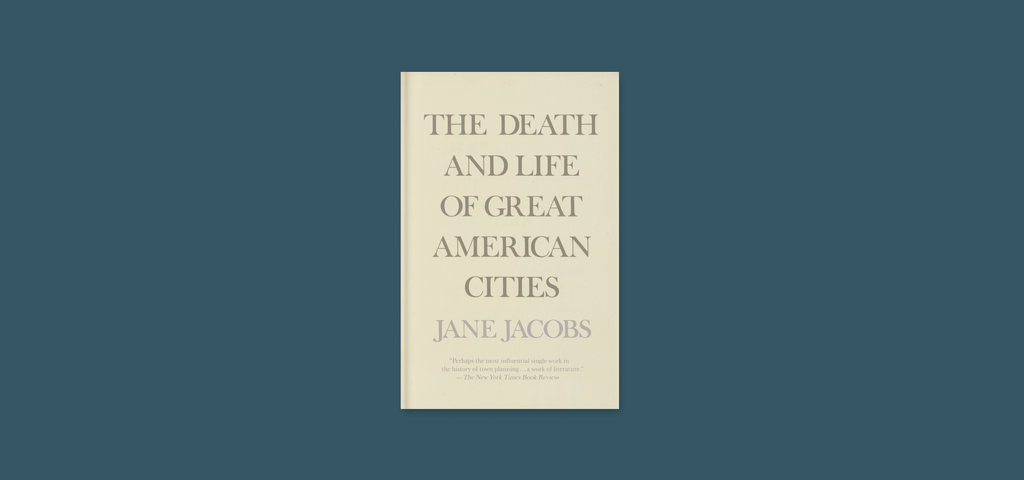Book Report:
Jane Jacobs — The Death and Life of Great American Cities

Jane Jacobs’ 1961 classic “The Death and Life of Great American Cities” is a heartfelt, but outstandingly rational defense of cities — written by someone who sincerely loves them — against megalomaniac designers clinging to utopian visions of cities that are aesthetically clean, yet bear no resemblance to what actually makes cities attractive in real life.
Jacobs urges the urban planners of her time to acknowledge cities as complex systems and abuses them of the notion that their simplistic, patronizing schemes have any chance at improving urban life.
They care more about their grand utopian theories than about actual observable outcomes — Howard’s “Garden City” and Le Corbusier’s “Ville Radieuse” come to mind. Instead, Jacobs suggests six goals for “Planning for vitality”: It must “stimulate and catalyze the greatest possible range and quantity of diversity among uses and among people”, “promote continuous networks of local street neighborhoods”, “combat the destructive presence of border vacuums”, “aim at unslumming the slums, by creating conditions aimed at persuading a high proportion of the indigenous residents, whoever they may be, to stay put by choice over time”, “convert the self-destruction of diversity and other cataclysmic uses of money into constructive forces” and “aim at clarifying the visual order of cities, and it must do so by both promoting and illuminating functional order, rather than by obstructing or denying it.” (p. 409) Every one of these goals, each of which is discussed at length, is logically deduced from observations of real cities.
I enjoyed this book very much for two reasons: First, as a designer, it is a great cautionary tale. It is easy to get caught up in discussions about superficial aesthetics and in great visions of what ought to be. I believe there is room for both in design, but they can’t become the primary concern. Jacobs’ approach anticipated the methods of Human-Centered Design, observing on a small scale, looking at individuals to learn about the larger system.
Secondly, even though the book is 60 years old and, from what I’ve heard, is now considered a classic in urban planning circles, there are still plenty of observations in it that you can just as well make today about the city around you. It for sure changed the way I look at the city around me! The terminology it offers is great to describe what makes neighborhoods feel attractive or plain. This, in turn, helps you appreciate the manifold complexity of city life at its best.
I also added some quotes from Jacobs’ book to my Notes on Complexity.
Continue Reading All Notes
-
OngoingNotes from Glenn Parsons’ The Philosophy of Design
-
30. September 2023Travel Notes: Medellín
-
06. July 2023Travel Notes: Grottole